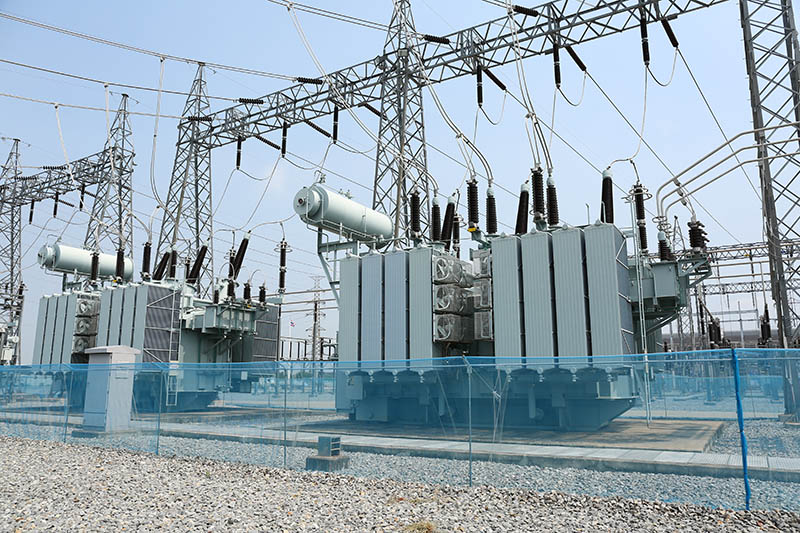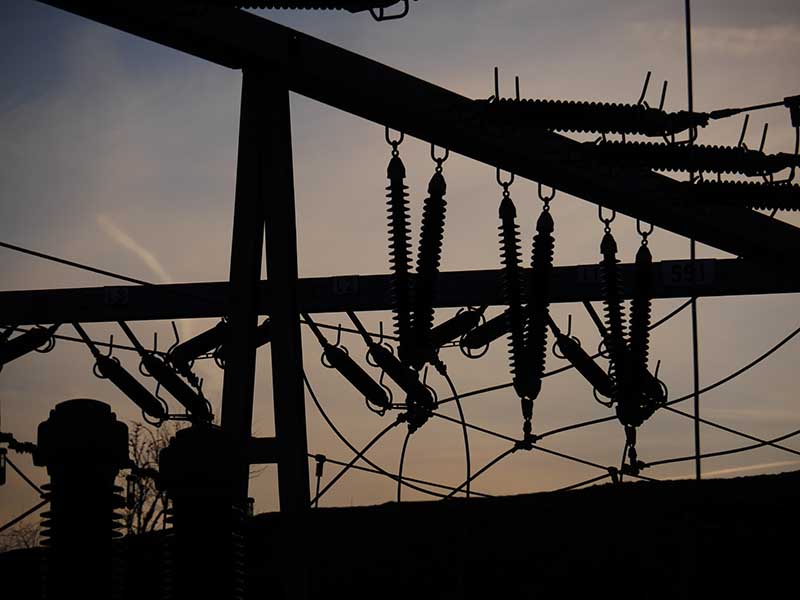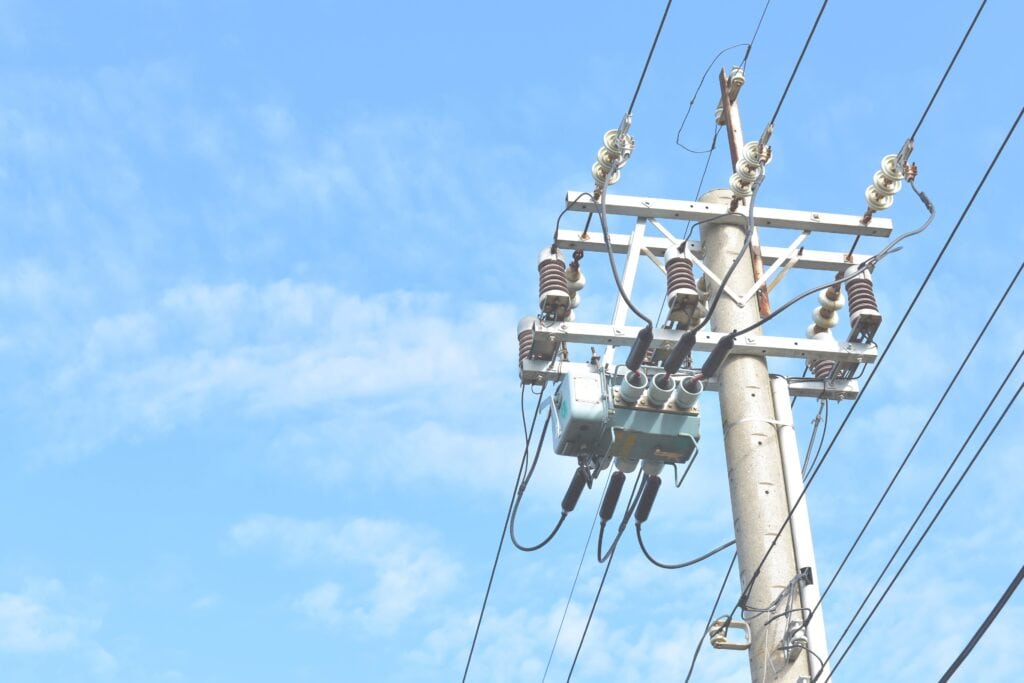What Does a Transformer Do & How Does It Work? The Interesting Answer!
-
Pete Ortiz
- Last updated:

In today’s modern world, electricity is a cornerstone of everyday life. It’s essential that we understand the basics behind transformers to make informed decisions when it comes to powering our homes and businesses. In a transformer, electrical energy is transferred from one type of circuit to another. But wait, there is more!
So, let’s dive into this fascinating topic and explore how these pivotal components enable power transmission between different voltage levels!
How Does It Work?
Transformers are built with two separate coils of wire that serve as a conduit between energy sources. The primary coil is connected to the electrical source, and the secondary coil is connected to the device that needs electricity.
When an alternating current (AC) passes through the primary coil, a magnetic field builds up in the transformer’s core—this induces a current in the secondary coil, creating a voltage that can be used to power an electrical device.
The transformer works by utilizing Faraday’s law of induction; this states that when a magnetic field near a conductor changes, it induces an electric current in the conductor.
Put simply, transformers are used to convert alternating currents between high and low voltages with extreme precision. By adjusting the ratio of primary to secondary coils, the voltage can be adjusted accordingly.
This allows for efficient transmission of electricity from a power source to its destination—allowing us to get back to our lives powered by our favorite electronics!

What Are the Different Types of Transformers?
Transformers come in diverse sizes and forms, each crafted to address a certain need. In particular, let’s delve into the three primary types of transformers:
Electromagnetic
Living up to its name, this transformer leverages electromagnetic induction to seamlessly transfer electrical energy from one circuit to the next. It is a highly efficient tool that can be seen in an array of settings, from power plants and consumer electronics to industrial machinery.
Optical
Venturing beyond the traditional wires, this type of transformer leverages optics to transfer power without any sort of physical connection.
Not only are they remarkably flexible and can be tailored for many applications, such as optical fiber communications, but they also bring convenience in a world where we rely on wireless technologies more than ever before.
Capacitor
Capacitors serve as practical transformers, storing and releasing electrical energy through capacitance. You can find them in high-voltage circuits, where they play the important role of adjusting current up or down, resulting in smoother power distribution.
Without capacitors to regulate electricity flow, these circuits would be prone to frequent overloads and damage. Capacitors come in handy when voltage needs to be decreased, increased, or when energy is supposed to be stored and released.
And no matter what type of transformer you need, they all serve the same purpose—to regulate electrical power around our fantastic planet!
Where Is It Used?
Transformers are incredibly versatile and can be found in a variety of applications, from power grids to consumer electronics. Their purpose ranges from voltage regulation, power conversion, and even control functions. Undeniably an invaluable tool in the world of electricity!
Transformers are indispensable components that use electricity, a coil, and either an electromagnetic or optical device known as a capacitor. These key elements interact to help convert voltage from one level to another using the principle of electromagnetic induction.
In other words, transformers collect energy supplied by electricity and boost it up so it can be effectively used in its desired destination. Thus, wherever there is a need for electric power, you’ll likely find this amazing equipment at work!

Advantages of Transformers
Let’s uncover the amazing advantages of transformers to gain a more comprehensive understanding of these phenomenal pieces of technology!
Durable
Transformers are built to last; their sturdiness has been engineered to withstand even the most extreme weather conditions and vibrations, ensuring maximum reliability and longevity.
Energy Efficiency
When it comes to energy saving, transformers are the cream of the crop! By reducing power loss up to an astounding 99%, they trump any other form of electricity transmission in terms of effectiveness and cost-efficiency.
Versatility
Transformers are incredibly versatile and come in an array of shapes and sizes to accommodate any application. For example, whether you need a small low-voltage transformer or an industrial-grade power line transformer, there is a perfect fit for the job!
Flexibility
Transformers offer tremendous versatility when it comes to their setup and utilization. Whether you’re looking to adjust voltage levels or convert AC to DC power, they can be easily adapted for a wide variety of uses with the right configuration. As such, they have become indispensable tools in countless applications.
Disadvantages of Transformers
Although transformers are incredibly useful pieces of technology, they come with a few drawbacks.
Cost
Transformers can be quite expensive, especially for larger models. This makes them less accessible to people who might need them for smaller applications.
Maintenance
Transformers require regular maintenance and servicing to ensure that they continue functioning correctly. Your local electric company might service them annually, or you might have to pay a specialist contractor, depending on the location and size of the transformer.
Weight
Transformers are quite heavy, especially the larger ones. This makes them difficult to move around or install in certain locations. Fortunately, electric companies have the right kind of vehicles and equipment to transport them safely.

Frequently Asked Questions
What does a transformer do?
Essentially, they transform electrical energy from one type of form to another. They can also be used to regulate voltage levels, store and discharge energy, and provide protection against surges. All these things make them incredibly useful in a variety of applications.
What voltage does a transformer use?
Most transformers use AC voltage and can handle an incredible range of 4,000 to 36,000 volts. This much voltage is required to transmit power over long distances. That said, there are also transformers designed to work with low-voltage circuits.
What is the smallest transformer?
The smallest transformer is typically a toroidal transformer, which can range in size from a few millimeters to several centimeters. These transformers are commonly used in consumer electronics such as smartphones and laptops due to their small physical size and low energy consumption.
How does a transformer work?
A transformer works by using the principle of electromagnetic induction. When an alternating current flows through the primary winding, it creates an alternating magnetic flux in the core of the transformer. This changing flux then induces an electromotive force (EMF) in the secondary winding and produces an alternating current at a different voltage.

Does a transformer create energy?
No, transformers don’t create energy; they simply transfer it from one circuit to another with minimal loss of power. This ensures that the energy is used in an efficient manner as it is sent to its destination.
Why do we need transformers?
Transformers provide a convenient way to change the voltage of an alternating current circuit, allowing us to use electricity in various types of applications. They also help protect electrical systems from overvoltage or short-circuit conditions by providing isolation between primary and secondary winding circuits.
What is a transformer’s efficiency?
Transformers are usually very efficient, with an efficiency rating of somewhere between 97% to 99%. Thanks to their efficiency, transformers can reduce energy losses from electricity transmission and distribution.
Conclusion
Transformers are indispensable components of electrical networks, allowing us to control and regulate the transmission of power. In essence, transformers allow for our electricity-dependent world—without them, we wouldn’t be able to turn on a light or power up any device!
So next time you plug something in, and it works flawlessly, don’t forget that thankless yet invaluable transformer that’s enabling your day to run smoother.
Featured Image Credit: KANITHAR AIUMLAOR, Shutterstock
Contents


